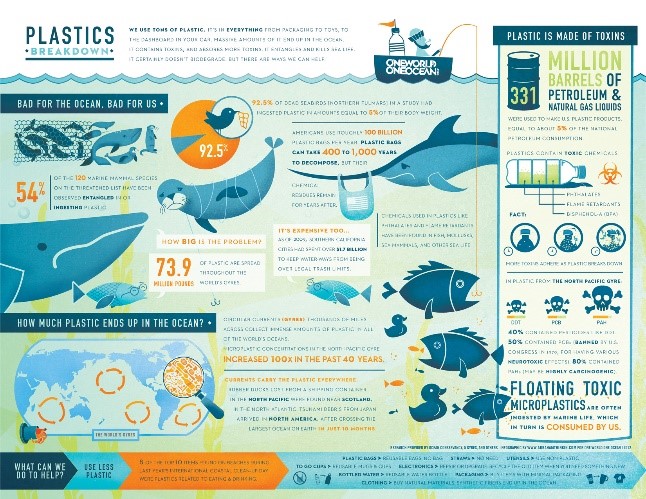In this two part series we take a look at the field of Instructional Design and outline the steps in this process from beginning to end. Instructional Design is a highly specialised field of learning management and development with many interwoven considerations in the process. The selection of your eLearning specialist should not be made lightly, so informing yourself on what goes on behind the scenes to create an online learning course can help you identify a quality service provider.
What is ID?
ID is the process of creating learning experiences in a way that knowledge and skills are learnt effectively, efficiently and in an engaging way. As a basic example, have a look at the two ima ges below. Which one looks more appealing to learn from?


Company training manuals are no longer thick textbooks for employees to study from, regurgitate the answers, and pass a multiple choice test. With the move towards digitisation of information possibilities open up into interactive, multimedia applications of information dissemination, collection and tracking.
It is important to understand what your instructional designer should do for you when creating your eLearning or learning management system (LMS). An instructional designer will take the information you have and turn it into something that’s easily consumed and understood. Successful eLearning, online learning, online course and the like, have competent instructional designers who can visualise your unappealing block of text and turn it into something powerful.
Digitisation of information does not mean that scanning in the pages of a manual and uploading as a .pdf is acceptable! Sometimes a simple slide show is all an organisation needs. Other times interactive simulations with diverse multimedia enhancements and an array of assessment strategies are necessary for learning.
Below I’ve outlined the processes that ID goes through. Understand the “steps” so that you can make an informed decision about your company’s eLearning endeavour.
This week I provide you with two of the five steps of ID.
Step 1: Analysis
Preparation is the name of the game in this step. Starting with the task at hand, an analysis of the company needs to be conducted. What is the job? What is it really about? What is the client not verbalising in their intention? What are the needs and outcomes?
The task is analysed to determine what knowledge, skills and/or abilities a learner must possess at the end of the learning experience. It’s as if ID works backwards. Starting at the end of the learning experience, with a learner who is qualified and trained, and then figuring out how to get that done.
A system will be conceptualised at this point, using things like a Decision Tree and/or a Task-to-Training Matrix. These systems help bring down to earth the sometimes lofty and abstract ideas that a company may have, and solidify them on paper.
Step 2: Design
This part of ID is the backbone of the learning experience, and surprisingly it is often the part that is most ignored when developing eLearning materials and courses by unqualified persons. It must be remembered that the whole learning experience revolves around the learner, not the technology. Focusing on how a person learns is paramount in designing systems for learning.
Learning Theories
The learning theories of ID are based on the psychology and art of learning, otherwise known as pedagogy. There are different theories on how we learn, and some people prefer to learn in different ways or styles. The instructional designer will choose the best theory for the task and outcomes.
In brief let’s start as far back as the Theory of Behaviourism. This theory was made famous by Pavlov and his dog. Ring a bell and the dog starts to drool because he has been trained to expect food at the ring of a bell and so will behave a certain way. For your employees this could mean that learning with a reward system will result in employees performing better at their jobs.
Cognitive Theory looked at how the brain works and how information is processed. These are theories about short term memory and long term memory. The human mind is often compared to a computer system. Input of information, processing, storing, and (this is often where the problem of memory lies) information retrieval. Employees could be taught how to memorise the procedural steps of an operation with this theory. Information is taught in a logical, step-by-step, first-things-first way.
Constructivist Theory is actually quite an old theory, dating back from around the 1930’s in the field of education. But recently with the advent of computer integrated learning, it makes sense to revive this theory and apply it to new technology. This is the theory most likely to be implemented into ID today. This theory says that learning is constructed by building upon prior knowledge or experiences. This is why graduates with qualification are often wanted. When they enter into the workplace, it is presumed that at least they have some knowledge upon which to build.

Teaching Theories
The ADDIE model stands for analysis, design, development, implementation and evaluation of the learning task. It is a progressive model that begins with the exploration of new knowledge. It’s a broad model that is often combined with other more fleshed-out models.
Bloom’s taxonomy is a way of distinguishing the complexity of questions. This is especially relevant when designing assessments, quizzes, tests, exams, etc. Multiple Choice and True/False type questions fall toward the bottom of the complexity scale where simply remembering is all that’s needed to answer the question. Towards the middle of the complexity scale is applying knowledge. Questions like “What factors would you change if...?” and “What questions would you ask of...?” At the most complex of Bloom’s taxonomy are questions of creating and evaluating. Design a new systems operation for a task-force in the field. Or judge the value of a newly arrived payload based on the current market behaviour.
Gagne’s 9 events are the events that happen in the process of teaching a lesson well. These same steps are followed in ID.
- Gain Attention
- Inform Learner of Objectives
- Stimulate Recall of Prior Learning (Constructivist learning theory)
- Present Stimulus Material
- Provide Learner Guidance
- Elicit Performance
- Provide Feedback
- Assess Performance
- Enhance Retention and Transfer
VARK is actually a learning style. People can be classified according to their 'style' of learning. Some people learn better with visuals – looking at something such as a slideshow or images while learning. Auditory learners learn better when listening to something, like a podcast. Read/write learners learn best after they have read through something or written it down. Kinaesthetic (interactive) learners want to participate or do something to move it in to memory. Interactive applications and simulations online help this type of learner. So which one are you?
All these learning and teaching theories will be considered by the instructional designer when creating the instructional objectives. Considerations will be made for cognitive, affective and psychomotor aspects in learning. The sequencing of information, the tactics involved in learning and teaching and other instructional strategies will form the ‘design package’.
Look out for Part 2 to read the rest of What you Should Know About Instructional Design.
Sound Idea Digital specialises in Learning Management Systems and eLearning developments | soundidealearningmanagement.co.za
Sandra is an eLearning Specialist & Content Editor for Sound Idea Digital | Sandra@soundidea.co.za
To cite this blog article:
Slabbert, S. 2015, Novermber 5. What you Should Know About Instructional Design - Part 1. <ideas> the official Sound Idea Digital blog [Web log post]. Available: http://blog.soundidea.co.za/articles/What_you_Should_Know_About_Instructional_Design-_Part_1-429.html
[Back]
blog comments powered by Disqus
